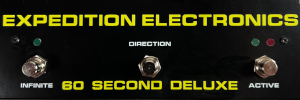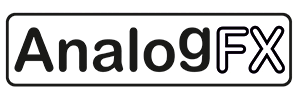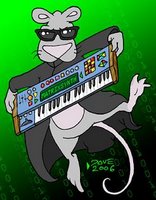Showing posts sorted by relevance for query Fundamental Frequency. Sort by date Show all posts
Showing posts sorted by relevance for query Fundamental Frequency. Sort by date Show all posts
Thursday, September 29, 2022
Osi-Op : Stereo Patches : Vaemi (Eurorack)
video upload by Vaemi
"Hello everyone Today we will be making stereo patches with Osi-Op. There are actually many ways to do this. We will now look at ways we can do it with just oscillators.
First of all, the 1st oscillator will be staying in the middle and playing the lowest frequency sound. The 2nd oscillator is panned to the left channel and the 3rd oscillator to the right channel. If we specify the amount of pan, we can say that 75% left and right panned. Apart from the random differences of the oscillators, we can say that changing the Waveshape Output with PWM settings and sometimes giving the opposite movement as a mirror of a movement to two opposite channels creates a very nice stereo image. While doing all these with basic waveforms, I also tried to create small differences between the right and left channels from time to time with Thru Zero FM. Now let's hear the results together.
Sunday, August 21, 2022
Vaemi : Osi-Op Through Zero (TZ) FM Sounds by Tunç Çakır
video upload by Vaemi
Osi-Op : Using Through Zero FM Synthesis and VCA : Vaemi (Eurorack)
"Osi-OP, which we regard as an analog reflection of the new era of digital electronic music, is an analog and voltage-controlled oscillator module. It was designed in Eurorack format and it has a width of 14hp. The fact that it has Thru Zero FM Input and a Waveshape Output, which can be used for morphing, are two of the most important features of this product. From a first impression, it may look like an oscillator that is appropriate for subtractive synthesis; however, we actually designed it to be used for additive synthesis. Thanks to Thru Zero FM, this oscillator can regard oscillators with Sine Wave as analog operators. You can even prepare your synthesizer patch without using the classic subtractive resonant filter. The most important aspect of Thru Zero FM is that there is no tune drift when you increase the modulation rate. For this reason, Thru Zero attenuator (TZ FM potentiometer) can almost be used like a filter itself. the frequency of the second oscillator acting as FM (operator) according to the frequency of the 1st oscillator giving the fundamental frequency; must be set in harmonic degrees of the fundamental frequency. But at these settings the tonality can remain in and be musical. In addition to Square, Saw, Triangle, and Square Sub oscillator outputs, it has a Sine Wave Output, which was designed with JFET transistors and has a very low distortion rate, and a Waveshape Output, which was designed with Sine-Triangle and can be used for morphing. It also has a Wave Shape Input. It is connected to this input via the Triangle Wave circuit board inside. Sine Wave is fixed on Wave Shape but you can forward it to the other WS Input by patching other waveforms, and you can morph between two waveforms. The pulse width of the Square Wave can be adjusted. The same knob is the morphing knob of the Waveshape Output. Since the oscillator has tempco, there is a 1V/OCT calibrated CV Input that is sensitive to heat. It can perfectly stay in tune up to 3.5 octaves. In addition, for FM, there are two separate CV Inputs, Exponential and Thru Zero. While Exponential FM CV Input can take all types of DC and AC voltages, Thru Zero FM CV Input can only be used for AC audio rate signals. Also, when you enter a waveform on Thru Zero FM CV Input, oscillators are soft-synced automatically. With 1V/OCT CV Input, you can adjust the frequency of the oscillator; and with Exponential FM CV Input, you can easily add an LFO or Envelope Generator. Square Wave Sub OSC Output, which is completely synced with fundamental frequency and can give an octave lower than the fundamental, will help you a lot to create strong modern synth-bass sounds. It is made with NOS IC. When the oscillator is FM modulated, the Sub OSC never gets negatively affected by this modulation; and it can maintain giving the frequency clearly. You can also switch the oscillator to the LFO mode. You can create subtractive syntheses by using two or more of these oscillators or by mixing these waveforms. The main reason for us to design this oscillator is, as its name shows, to enable the creation of complex FM patches and sounds by using 2-3 or more of these oscillators, just like Operator FM. While Thru Zero FM increases the modulation, it can maintain giving the same frequency without losing the adjusted frequency; and you can add harmonics to the sound musically. The module has 5 knob controls, 4 CV Inputs, an input for Waveshaper, and 6 ±5V waveform outputs. Osi-OP, which is handmade and produced with the help of Through Hole technology, is a product consisting of electronic components that is carefully tested."
Thursday, August 11, 2022
Vaemi Osi-Op Oscillator Eurorack Module
via Vaemi
Osi-OP, which we regard as an analog reflection of the new era of digital electronic music, is an high quality analog and voltage-controlled oscillator module. It was designed in Eurorack format and it has a width of 14hp. The fact that it has Thru Zero FM Input and a Waveshape Output, which can be used for morphing, are two of the most important features of this product. From a first impression, it may look like an oscillator that is appropriate for subtractive synthesis; however, we actually designed it to be used for additive synthesis. Thanks to Thru Zero FM, this oscillator can regard oscillators with Sine Wave as analog operators. You can even prepare your synthesizer patch without using the classic subtractive resonant filter. The most important aspect of Thru Zero FM is that there is no tune drift when you increase the modulation rate. For this reason, Thru Zero attenuator (TZ FM potentiometer) can almost be used like a filter itself. the frequency of the second oscillator acting as FM (operator) according to the frequency of the 1st oscillator giving the fundamental frequency; must be set in harmonic degrees of the fundamental frequency. But at these settings the tonality can remain in and be musical. In addition to Square, Saw, Triangle, and Square Sub oscillator outputs, it has a Sine Wave Output, which was designed with JFET transistors and has a very low distortion rate, and a Waveshape Output, which was designed with Sine-Triangle and can be used for morphing. It also has a Wave Shape Input. It is connected to this input via the Triangle Wave circuit board inside. Sine Wave is fixed on Wave Shape but you can forward it to the other WS Input by patching other waveforms, and you can morph between two waveforms. The pulse width of the Square Wave can be adjusted. The same knob is the morphing knob of the Waveshape Output. Since the oscillator has tempco, there is a 1V/OCT calibrated CV Input that is sensitive to heat. It can perfectly stay in tune up to 3.5 octaves. In addition, for FM, there are two separate CV Inputs, Exponential and Thru Zero. While Exponential FM CV Input can take all types of DC and AC voltages, Thru Zero FM CV Input can only be used for AC audio rate signals. Also, when you enter a waveform on Thru Zero FM CV Input, oscillators are soft-synced automatically. With 1V/OCT CV Input, you can adjust the frequency of the oscillator; and with Exponential FM CV Input, you can easily add an LFO or Envelope Generator. Square Wave Sub OSC Output, which is completely synced with fundamental frequency and can give an octave lower than the fundamental, will help you a lot to create strong modern synth-bass sounds. It is made with NOS IC. When the oscillator is FM modulated, the Sub OSC never gets negatively affected by this modulation; and it can maintain giving the frequency clearly. You can also switch the oscillator to the LFO mode. You can create subtractive syntheses by using two or more of these oscillators or by mixing these waveforms. The main reason for us to design this oscillator is, as its name shows, to enable the creation of complex FM patches and sounds by using 2-3 or more of these oscillators, just like Operator FM. While Thru Zero FM increases the modulation, it can maintain giving the same frequency without losing the adjusted frequency; and you can add harmonics to the sound musically. The module has 5 knob controls, 4 CV Inputs, an input for Waveshaper, and 6 ±5V waveform outputs. Osi-OP, which is handmade and produced with the help of Through Hole technology, is a product consisting of electronic components that is carefully tested..
Wednesday, September 08, 2021
Neuzeit Orbit Bitcrusher + Harmonizer
video upload by Cinematic Laboratory
"Orbit is an effect module providing bitcrushing, harmonizing and filtering. It doesn't do anything on its own, so it needs an external source. It's a great module if you want to turn a simple sound into something huge, and it also works very well with drum and bass sounds, providing lots of animation thanks to the many CV inputs. Highly recommended when you're into Techno. I still have to figure out what will happen with more ambient patches, so there will be a part 02."
Neuzeit Orbit | Part 02 | Light & Dark Ambient
video upload by Cinematic Laboratory
"A second take on the Neuzeit Orbit, but this time in a more ambient setting with a clear light and obscure dark side. After playing with it for more than a week I found out the Orbit works best with either simple waveforms and beats - or a big system with lots of utilities. I don't think it's a beginner module, but if your system needs some 'grit', it's definitely worth a listen."
"In their debut module, the Neuzeit Instruments Orbit is a compelling example of how smaller synthesis blocks can be combined together into a deep and rewarding instrument and processor with its own unique identity. Within Orbit you'll find bitcrushing, filtering and EQ, harmonically-related pitch-tracking oscillators, an envelope generator and LFO, mixing capabilities, and more—all useful elements in their own right. But the magic behind Orbit is how these sections all interact and relate with each other, resulting in complex sound design and processing capabilities without a ton of additional modules or patching.
There are two main sections in Orbit named CRSH and HARM, as well as the filter, dedicated low frequency EQ, and the envelope. External signals enter Orbit at the bottom left, offering two input VCAs with level and CV controls, as well as a third input which runs straight into the filter, skipping the other three sections entirely. The summed output of the two VCAs then runs through a bass boost/cut EQ, which passes onto the other processing sections, as well as being available via the BLEED level control in the mixer just before the filter. Thus, while there is a dedicated level control for the totally dry input signal at the output, BLEED is another way to dial in body and fundamental frequencies which may get lost in the midst of the other sections' processing.
Thursday, August 30, 2018
FM Synthesis Tutorials by Element433
Published on Aug 30, 2018 Element433
Playlist (Descriptions for each below):
1. FM Synthesis. A Catalogue of Materials. 01 Metal
2. F.M. Synthesis. A Catalogue of Materials. 02 Wood
Sunday, November 26, 2023
Luminous Trilogy & A CATALOGUE OF FM MATERIALS by Element433 ( a.k.a. Pere Villez)
via Element433 (Pere Villez)
"When I made the popular YouTube series 'FM Catalogue of Materials', many viewers commented that they would love to see some more of the 'music tech as cinema' style created in the videos.
My new project 'Luminous Trilogy' release, does exactly that. In part 1 'WTD', synths and synth technical diagrams, together with Pure Data/Max patches, become casual parts of the film's environment, which is set in an alt near future. Part 1 was realised with analogue modular, whereas Part 2 "Breath" was scored using binaural audio, VCV rack and live Indian tablas. Part 3 'Contrails' uses physical models, Samplicity's Berlin Studios and vintage FM hardware."
Update: Element433 has made the VCV patch and assets used in the film "Breath" below a free download. You can find instructions on downloading the patch and setting it up here: http://tinyurl.com/e433WpBrvcv.
Luminous Trilogy
video uploads by Element433 ( a.k.a. Pere Villez)
"Three music shorts around the theme of light, from incandescent urban folklore set in the near future, electric neon glowing medussae to impossible skies, all to the sound of dark ambient and techno-world music"
Playlist:
Walking The Dulzaina - Luminous Trilogy - Part 1
Walking The Dulzaina is an edited one-shot music film which details the manic walkthrough time-lapse of an imaginary synthesised dulzaina (Spanish folkloric instrument) being taken for a walk through the "Las Vegas" like dressed streets of a small village festive celebration set somewhere in the near future.
The visuals are nods to the Bladerunner, Lynch, Weirdcore and Kubrick where the glow of transparent neon CRTs, display technical diagrams with a music technology theme. Some suddenly slide up from the ground, while others cross from one side of the street to another.
The music is inspired by minimalism, industrial techno synth-folk where Steve Reich and Techno meet Raymond Scott and 1960's BBC radiophonic.
Musical Equipment Detail:
Intro: Moog Subharmonicon through Fairfield Randy's Revenge ring modular - into two crunchy Elby Systems stereo valve preamps and out into a stereo pair of Doepfer A-199 spring tanks).
Dulzainas: Buchla Easel Command sometimes untreated and sometimes solo through a J.H. 'Son of a Storm Tide' stereo analogue studio flanger (built by Van Daal Electronics (second dulzainas and very low transition whoooses). Buchla and Subharmonicon sync locked and clock divided by Ornaments and Crime clock divider.
Final wormhole sequence: Subharmonicon through stereo A-199 Doepfer spring reverbs and Paulstretched.
This work is not sponsored by any the manufacturers mentioned. They are personally purchased pieces of equipment.
Album:
https://distrokid.com/hyperfollow/ele...
LABELS/MORE:
Buchla,
CME,
Doepfer,
eurorack,
Fairfield Circuitry,
MATRIXSYNTH Members,
MOOG,
Mutable Instruments,
Pure Data,
Synth Albums,
Yamaha
Monday, September 02, 2024
Vaemi Introduces VoltRatio Precision Voltage Adder - Subtractor Eurorack Module
video upload by Vaemi
"VoltRatio : Basic Features : Precision Voltage Adder - Subtractor : Vaemi (Eurorack)"
"The VoltRatio 1V/OCT CV input allows you to quickly and easily switch through exactly 6 harmonic degrees. Additionally, this module enables you to obtain both a copy of the fundamental frequency's voltage and a frequency one octave below simultaneously, allowing you to comfortably control up to 3 oscillators at once. Furthermore, designed as a precision multiple, this module offers precise and professional calibration options, helping your system stay in accurate tuning and advancing both you and your system.
The frequency ratio system, which can also be found in the first digital examples of Thru Zero Frequency Modulation and allows easy adjustment of harmonic degrees in all operator oscillators according to the fundamental frequency, is crucial for maintaining musical and tonal compatibility. This system greatly simplifies programming in complex FM patches. With the three separate outputs designed as Vaemi, which replicate the 1V/OCT CV input like a precision multiple and provide different degrees, you can use all analog thru zero or standard voltage-controlled oscillators. Quickly navigating between harmonic degrees during recording or live performances will provide significant musical and practical advantages. The output providing harmonic degrees (Ratios) includes 2 buffered outputs, making a total of 4 CV outputs on the module.
You can adjust the desired voltage and harmonic degrees between 0-6V according to your preferences and needs using the trimpots on the back of the module. Additionally, you can set the -1 OCT output to the desired negative level using the trimpots on the back.
All inputs and outputs of the module are DC coupled. Essentially, the module adds or subtracts an offset voltage to the voltage entered into the 1V/OCT CV input. We can think of it as a precision CV adder-subtractor. The sum of the entered and added voltages is what comes out of the outputs. In short, you can also use this module to shift the offset, process signals like envelopes or LFOs, and more. (Note about the module: one of the most important points is that it has both positive and negative outputs and precise calibrations for offset and CV scale. So, it’s not just about adding offset voltage to the voltage.)
You can read which channel you are on from the top of the module or easily determine it with the help of LEDs. The module is 10HP wide."
VoltRatio : VoltRatio & OSI-OP Jam : Precision Voltage Adder - Subtractor : Vaemi (Eurorack)
Friday, May 04, 2018
Superbooth 2018: XAOC Devices Odessa & Zadar - Mad Additive Oscillator & Quad Envelope
Published on May 4, 2018 sonicstate
"The guys from XAOC take us through their two new wild modules."
1975 Variable Spectrum Harmonic Cluster Oscillator
· Additive synthesis engine
· 2500 harmonic partials generated
· Straightforward user interface
· Through-zero linear frequency modulation
· Detuneable clusters of up to 5 voices
Odessa implements the principle of additive synthesis controlled by a set of carefully tailored marco parameters to harness thousands of sinusoidal partials that altogether form the resulting sound.
The interface is kept simple and accessible, so you can easily build rich and full, great sounding timbres of very complex spectra, that can be either harmonic or inharmonic. Even though inharmonic spectra yield non-periodic waveforms, all partials are frequency related to the common fundamental controlled by a V/oct input. The series of harmonics can be squeezed or spread apart, tilt, and pruned by a comb-like frequency response, resulting in a variety of unearthy sounds. Animating the comb response yields radical effects similar to flanging and phasing. Additional, often sought after features are implemented: through-zero linear frequency modulation, and unison detune: up to 5 copies of the sound can be spread apart for a fat and dense cluster of voices.
There are nine parameters, each controlled by a dedicated knob, so the workflow is as smooth and immediate as possible. Furthermore, every parameter has a dedicated CV input, allowing live animation for organic audio effects. Odessa sports two main outputs for banks of harmonic partials that can be further scaled in frequency, as well as an additional output that can either spit out a square wave or a a single sinusoid of the fundamental frequency. Interesting spatial effects, crazy modulation feedbacks as well as synchronisation is possible that way.
The hardware is based on a powerful FPGA chip offering massive parallel computing. The synthesized signal is devoid of aliasing through the entire audio range thanks to intrinsically bandlimited algorithm. A simplified spectral analyzer helps you to keep a visual track of what is actually happening to the harmonics.
For even more control over Odessa, you can use our Leibniz subsystem (or just the Lipsk) that can be connected to a header at the back of the module."
1973 Quadruple Envelope Generator
· Four indepenent channels
· More than 200 unique shapes
· Cycle time range: 0,08ms to 20 sec.
· Shapes can be radically modified in two dimensions
· Complex envelope looping and chaining features
· Assignable CV inputs to cotrol almost every parameter
· Preset slots
Based on the general idea of synthesis by deformable vector shapes, Zadar allows you to choose from a wide variety of envelope functions, designed to suit pretty much any possible usage scenario. From basic and simple to complex transients, from looped modulation cycles to rhythmical patterns, from quasi-randoms to perfectly regular functions, natural envelopes extracted from various acoustic and electronic instruments, abstract fractals and physical models, etc. — they all work great as envelopes but also as stepped sequences, LFOs, resonator exciters and so on.
Starting with one of (literally) hundreds of shapes defined by freely scalable vectors of breakpoints stored in the memory, envelopes can be tweaked and adjusted to the heart’s content. Each shape consists of up to a thousand of segments, and it may be warped in time and amplitude, reversed, stretched from a fraction of milisecond to about 20 minutes, and of course attenuated. By manipulating these parameters you can easily obtain a plethora of new shapes, but it doesn’t end here.
Envelopes can be repeated, looped, chained and each channel sports a freely assignable CV input, allowing for most of the above mentioned transformations to be externally controlled as well.
Operating Zadar is quick and straightforward thanks to the set of four “endless” encoders. Menu diving has been reduced to minimum, and is actually only needed for the advanced settings. A crisp OLED screen provides the necessary visual feedback in real time. All the settings can be stored and organised in preset slots.
There are plans for even more functions to be added in later firmware revisions. Also, a small but very useful Nin expander module is planned, sporting yet another set of individual, assignable CV inputs and manual trigs for each channel for better tweaking comfort."
LABELS/MORE:
New,
New in 2018,
New Modules,
New Modules in 2018,
Superbooth,
Superbooth18,
XAOC Devices
Monday, June 15, 2020
FUNDAMENTAL - New Test Equipment VST by SonicLab In Collaboration with HAINBACH
HAINBACH
"In which I am proud to release the VST instrument I have been working on for half a year with Sinan Bökesoy of SonicLab. Crafted with love and care, this is a rich-sounding and exploration-inviting tool for your music. Its steeped in history, but can be adapted to any music style."
Fundamental - the root of electronic music brought into the now.
Sinan Bokesoy
"Fundamental feels like something Stockhausen, Xenakis and HAL 9000 might have dreamed up after a bender. Recalling the past of electronic music and reconstruction of a massive german vacuum oscillator on a modern instrument with immense possibilities. Proudly presenting a collaboration of sonicLAB and Hainbach."
"Fundamental is a sound synthesis software tool combining the different roots of electronic music history. Fundamental wave engine is a faithful sonic recreation of a vintage Rohde&Schwartz vacuum tube oscillator ( having been widely used at WDR by Stockhausen )
Fundamental leaves behind the limitations of the original device by proposing complex modulation possibilities, stochastic distributions addressing the sonic parameters like frequency , gain, stereo panning etc. in continuum, which has not been applicable until now.
Fundamental feels like something Stockhausen, Xenakis and HAL 9000 might have dreamed up after a bender: recalling the past of electronic music through a dynamic modern reinterpretation of a massive german vacuum oscillator,
Wednesday, May 08, 2019
New Joranalogue Generate 3 Through-Zero Multiphonic Signal Generator
via Joranalogue
"The crazy synthesiser gathering that is Superbooth is upon us once again! It's held from 9-11 May in FEZ Berlin, Germany.
As last time, you can find the Joranalogue booth next to the main entrance, with the full Eurorack series ready for you to try. This year you can also attend a 'Gesprächskonzert' (lecture concert) to find out more about the design philosophy and what's next to come. See you on Saturday 11 May at 14h in the Cinema!
Since the announcement and release of Filter 8 last year, the calls for a Joranalogue oscillator module have been overwhelming. Not content with just a simple VCO module, the result of our design effort is a truly universal signal generator. Read on below to find out more...
LABELS/MORE:
eurorack,
JORANALOGUE,
New,
New in 2019,
New Modules,
New Modules in 2019,
Superbooth,
Superbooth19
Saturday, May 10, 2014
Timbre: why different instruments playing the same tone sound different
Published on May 10, 2014 What Music Really İs·4 videos
Thought this was pretty cool. Not a synth demo but obviously applicable. Filing this one in the Synth Tutorials channel.
"'The same tone' is not the same at all. We usually think of a tone as the frequency of one sound: the fundamental frequency common to all instruments exemplified here, but every tone is in fact a complex entity - a chord if you will - consisting of many other simple tones.
These simple tones are reiterations of the same energy, on different levels. They are harmonically related to each other (do not confuse true harmony with the simultaneous playing of equal tempered tones). The simple mathematical law governing the harmonic series is depicted here: the fundamental frequency at 128 Hz is harmonic 1, or simply the fundamental. The next harmonic oscillates exactly 2 times faster at 256 Hz; harmonic 3 precisely 3 times giving 384 Hz, and so on.
This progression 1 2 3 4 5 ... generating aurally unequal tones continues to infinity. Physically, a harmonically rich timbre like that of the sitar or accordion goes beyond the 120th harmonic - visible on the graphic. Musically, the Harmonic Series is nature's perfect tuning system, generating three-dimensional spiraling vortexes having perfectly consonant harmonies and evolving fractal beatings (as opposed to the stiff two-dimensional sound waves of equal temperament, spinning in closed circles with their constant and annoying beatings and phaser-like dissonances).
Many tunings based on rational numbers like Just Intonation and the tuning systems of different ethnic and indigenous cultures are in true harmonic alignment with the nature of sounds. True harmonic music is the miniature of energy laws throughout the Universe."
Tuesday, December 16, 2014
Introducing the Nodular Desktop Synthesizer - Two Sided Analog Monophonic Semi-Modular Synthesizer
Note: links to listings are affiliate links for which the site may be compensated.
via this auction
Update: the maker/brand name for this synth is ndlr.synths. I created a new channel label for them. We have a new synthesizer manufacturer in town. See second "Update" at the bottom of this post for additional notes on the design.
 via the auction:
via the auction:
"Up for sale: one monophonic analog synthesizer. I've been making analog synthesizers for about 15 years now, but this is the first I am offering up for sale to the 'general public'. I am hoping to make a business out of selling this particular model, and you could be my very first customer.
 The pictures show the same unit that is up for sale. The cabinet is made from 3/4" natural cherry boards, except for the base, which is made of 3/4" MDF. Both instrument panels are made of 1/8" thick anodized aluminum. The panels have been mechanically engraved and the engravings filled with chemically hardened black enamel paint. The whole unit measures about 18" wide by 18" deep by 12" tall. It weighs about 40 pounds. This is a very well made unit, with sturdy instrument panels that'll last a lifetime.
The pictures show the same unit that is up for sale. The cabinet is made from 3/4" natural cherry boards, except for the base, which is made of 3/4" MDF. Both instrument panels are made of 1/8" thick anodized aluminum. The panels have been mechanically engraved and the engravings filled with chemically hardened black enamel paint. The whole unit measures about 18" wide by 18" deep by 12" tall. It weighs about 40 pounds. This is a very well made unit, with sturdy instrument panels that'll last a lifetime.
This synthesizer has its own +15/+10/GND/-10/-15 volt power supply and will only run on 120VAC 60Hz. It consumes about 45 watts of power at full bore.
All the modules in this synthesizer have been designed to work together seamlessly, and all use the same standards: 1 volt per octave, 10 volt peak-to-peak signal voltages, and 5 volt peak-to-peak gate, trigger, and control voltages. All patches are made among the modules via banana jacks. And a few different ways of interfacing to external modules or instruments are offered via 1/4" phone jacks.
A description of the different modules follows:
(1) ring modulator
(1) white and pink noise and random voltage source
(1) sample/track & hold
(1) voltage comparator
(2) low frequency oscillators (LFOs):
(1) headphone amplifier
Both offer voltage controlled frequency, variable offset and symmetry, and sinusoidal, triangular, and pulse wave outputs. By adjusting the speed knob, the frequency can be changed from about 20Hz down to really, really, slow. This range can be extended through voltage control.
(3) voltage controlled oscillators (VCOs):
 All three offer 1 volt per octave frequency control, voltage controlled pulse width modulation, ac-coupled linear frequency control, hard sync, and sine, triangle, sawtooth, and pulse wave outputs. They'll track to within .2% over at least 8 octaves with basically negligible temperature drift once the enclosure is warmed up. And they'll operate from below audio to above audio frequencies.
All three offer 1 volt per octave frequency control, voltage controlled pulse width modulation, ac-coupled linear frequency control, hard sync, and sine, triangle, sawtooth, and pulse wave outputs. They'll track to within .2% over at least 8 octaves with basically negligible temperature drift once the enclosure is warmed up. And they'll operate from below audio to above audio frequencies.
In addition, the first VCO offers a frequency range switch and fine tuning.
via this auction
Update: the maker/brand name for this synth is ndlr.synths. I created a new channel label for them. We have a new synthesizer manufacturer in town. See second "Update" at the bottom of this post for additional notes on the design.
 via the auction:
via the auction:"Up for sale: one monophonic analog synthesizer. I've been making analog synthesizers for about 15 years now, but this is the first I am offering up for sale to the 'general public'. I am hoping to make a business out of selling this particular model, and you could be my very first customer.
 The pictures show the same unit that is up for sale. The cabinet is made from 3/4" natural cherry boards, except for the base, which is made of 3/4" MDF. Both instrument panels are made of 1/8" thick anodized aluminum. The panels have been mechanically engraved and the engravings filled with chemically hardened black enamel paint. The whole unit measures about 18" wide by 18" deep by 12" tall. It weighs about 40 pounds. This is a very well made unit, with sturdy instrument panels that'll last a lifetime.
The pictures show the same unit that is up for sale. The cabinet is made from 3/4" natural cherry boards, except for the base, which is made of 3/4" MDF. Both instrument panels are made of 1/8" thick anodized aluminum. The panels have been mechanically engraved and the engravings filled with chemically hardened black enamel paint. The whole unit measures about 18" wide by 18" deep by 12" tall. It weighs about 40 pounds. This is a very well made unit, with sturdy instrument panels that'll last a lifetime.This synthesizer has its own +15/+10/GND/-10/-15 volt power supply and will only run on 120VAC 60Hz. It consumes about 45 watts of power at full bore.
All the modules in this synthesizer have been designed to work together seamlessly, and all use the same standards: 1 volt per octave, 10 volt peak-to-peak signal voltages, and 5 volt peak-to-peak gate, trigger, and control voltages. All patches are made among the modules via banana jacks. And a few different ways of interfacing to external modules or instruments are offered via 1/4" phone jacks.
A description of the different modules follows:
(1) ring modulator
(1) white and pink noise and random voltage source
(1) sample/track & hold
(1) voltage comparator
(2) low frequency oscillators (LFOs):
(1) headphone amplifier
Both offer voltage controlled frequency, variable offset and symmetry, and sinusoidal, triangular, and pulse wave outputs. By adjusting the speed knob, the frequency can be changed from about 20Hz down to really, really, slow. This range can be extended through voltage control.
(3) voltage controlled oscillators (VCOs):
 All three offer 1 volt per octave frequency control, voltage controlled pulse width modulation, ac-coupled linear frequency control, hard sync, and sine, triangle, sawtooth, and pulse wave outputs. They'll track to within .2% over at least 8 octaves with basically negligible temperature drift once the enclosure is warmed up. And they'll operate from below audio to above audio frequencies.
All three offer 1 volt per octave frequency control, voltage controlled pulse width modulation, ac-coupled linear frequency control, hard sync, and sine, triangle, sawtooth, and pulse wave outputs. They'll track to within .2% over at least 8 octaves with basically negligible temperature drift once the enclosure is warmed up. And they'll operate from below audio to above audio frequencies.In addition, the first VCO offers a frequency range switch and fine tuning.
Saturday, April 06, 2024
JCS BN-1 "Bakery of Noise" Digital PCM Synthesizer – One of a Kind
Note: links to listings are affiliate links for which the site may be compensated.
"JCS BN-1" 4-Bit Linear PCM Synthesizer - Part 1 (Prototype)
video upload by blarrer20
"JCS BN-1" 4-Bit Linear PCM Synthesizer - Part 2 (Finished)
video upload by blarrer20
"This video demonstrates the final version of a 4-bit Linear PCM synthesizer that I have designed and built over about two months. It makes use of mostly Soviet clones of 7400 and 74LS series TTL chips, with no microcontrollers involved. It has a 256 x 4 SRAM chip that allows the user to program whatever waveforms may be desired, with looping capability, and starting at whatever point desired. Most importantly, it is able to be controlled by an external source, for example a keyboard instrument. It also has a frequency doubler circuit. This video is part 2 of 2, showing the finished product.
If you want to skip right to the sounds, go to 27:08"
via this listing
Pics of the inside below.
Details from the listing:
video upload by blarrer20
"JCS BN-1" 4-Bit Linear PCM Synthesizer - Part 2 (Finished)
video upload by blarrer20
"This video demonstrates the final version of a 4-bit Linear PCM synthesizer that I have designed and built over about two months. It makes use of mostly Soviet clones of 7400 and 74LS series TTL chips, with no microcontrollers involved. It has a 256 x 4 SRAM chip that allows the user to program whatever waveforms may be desired, with looping capability, and starting at whatever point desired. Most importantly, it is able to be controlled by an external source, for example a keyboard instrument. It also has a frequency doubler circuit. This video is part 2 of 2, showing the finished product.
If you want to skip right to the sounds, go to 27:08"
via this listing
Pics of the inside below.
Details from the listing:
LABELS/MORE:
Auctions,
Breadboard,
DIY,
JCS,
New DIY,
New Makers,
New Sound Machines,
New Synths,
News,
Reverb,
synth guts
Monday, December 11, 2017
New Synthesizer plug-in Fluoresynth 2 from Electric Telepathy
Published on Dec 7, 2017 Electric Telepathy
"Version 2 of our popular synthesizer. Get Fluoresynth at https://electrictelepathy.com
Make better music faster
Musicians want to spend their time making music, not learning how to use a particular synth.
Fluoresynth (sounds like “fluorescent”) allows you to play with a rich soundscape without needing a complicated interface. You’ll immediately start making music instead of figuring out controls.
Place your mouse over the sliders to see how each one changes Fluoresynth’s sound.
It’s easier than deciphering a wall of knobs.
Precise Harmonics
Fluoresynth produces an audio signal composed of a fundamental tone and 12 overtones. It produces no noise and filters all aliased frequencies.
How does Fluoresynth work?
Tuesday, April 09, 2013
Moog Moogerfooger MF-107 FreqBox SN 2797
Note: links to listings are affiliate links for which the site may be compensated.

via this auction
"The MF-107 FreqBox is different from other effects - the effected sound is not a processed version of your input signal, but the sound of the input signal modulating an internal oscillator. It contains a VCO with continuously variable waveshape, and the capacity to modulate that Oscillator in the following ways:
- the VCO can be hard synced by the input signal
- The VCO can be frequency modulated (FM) by the input signal
- The VCO frequency can be modulated by an envelope follower which tracks the dynamics of the input signal
- The Amplitude of the VCO also tracks the dynamics of the input signal
Hard sync is a classic analog synthesis technique where the start of an oscillator's cycle can be reset by another. The oscillator being synced takes on the frequency characteristics of the other oscillator, and when its frequency is swept, it reinforces the harmonics of the fundamental frequency. In the case of the FreqBox, the input signal is used to reset the FreqBox's VCO.
FM is a technique used to get really rich sounds from simple waveforms. The type of FM used in the FreqBox is linear FM. Sounds range from gong or bell-like tones to sizzly sweeps.
The FreqBox, like all moogerfoogers, works with any instrument to line-level input. In addition to the panel controls there are control inputs for use with expression pedals or control voltages and control outputs for interconnecting moogerfoogers like you would a modular synth.
The FreqBox can provide some really unusual processing to all types of signals: guitars, synths, drum sounds, vocals or wind instruments allowing you to enter previously unexplored sonic territory."


via this auction
"The MF-107 FreqBox is different from other effects - the effected sound is not a processed version of your input signal, but the sound of the input signal modulating an internal oscillator. It contains a VCO with continuously variable waveshape, and the capacity to modulate that Oscillator in the following ways:
- the VCO can be hard synced by the input signal
- The VCO can be frequency modulated (FM) by the input signal
- The VCO frequency can be modulated by an envelope follower which tracks the dynamics of the input signal
- The Amplitude of the VCO also tracks the dynamics of the input signal
Hard sync is a classic analog synthesis technique where the start of an oscillator's cycle can be reset by another. The oscillator being synced takes on the frequency characteristics of the other oscillator, and when its frequency is swept, it reinforces the harmonics of the fundamental frequency. In the case of the FreqBox, the input signal is used to reset the FreqBox's VCO.
FM is a technique used to get really rich sounds from simple waveforms. The type of FM used in the FreqBox is linear FM. Sounds range from gong or bell-like tones to sizzly sweeps.
The FreqBox, like all moogerfoogers, works with any instrument to line-level input. In addition to the panel controls there are control inputs for use with expression pedals or control voltages and control outputs for interconnecting moogerfoogers like you would a modular synth.
The FreqBox can provide some really unusual processing to all types of signals: guitars, synths, drum sounds, vocals or wind instruments allowing you to enter previously unexplored sonic territory."

Tuesday, January 24, 2023
Moog MF-107 Moogerfooger FreqBox
Note: links to listings are affiliate links for which the site may be compensated.
via this auction
"The MF-107 FreqBox is different from other effects – the effected sound is not a processed version of your input signal, but the sound of the input signal modulating an internal oscillator. It contains a VCO with continuously variable waveshape, and the capacity to modulate that Oscillator in the following ways:
- the VCO can be hard synced by the input signal
- The VCO can be frequency modulated (FM) by the input signal
- The VCO frequency can be modulated by an envelope follower which tracks the dynamics of the input signal
- The Amplitude of the VCO also tracks the dynamics of the input signal
Hard sync is a classic analog synthesis technique where the start of an oscillator’s cycle can be reset by another. The oscillator being synced takes on the frequency characteristics of the other oscillator, and when its frequency is swept, it reinforces the harmonics of the fundamental frequency. In the case of the FreqBox, the input signal is used to reset the FreqBox’s VCO.
FM is a technique used to get really rich sounds from simple waveforms. The type of FM used in the FreqBox is linear FM. Sounds range from gong or bell-like tones to sizzly sweeps.
The FreqBox, like all moogerfoogers, works with any instrument to line-level input. In addition to the panel controls there are control inputs for use with expression pedals or control voltages and control outputs for interconnecting moogerfoogers like you would a modular synth.
The FreqBox can provide some really unusual processing to all types of signals – guitars, synths, drum sounds, vocals or wind instruments allowing you to enter previously unexplored sonic territory."
via this auction
"The MF-107 FreqBox is different from other effects – the effected sound is not a processed version of your input signal, but the sound of the input signal modulating an internal oscillator. It contains a VCO with continuously variable waveshape, and the capacity to modulate that Oscillator in the following ways:
- the VCO can be hard synced by the input signal
- The VCO can be frequency modulated (FM) by the input signal
- The VCO frequency can be modulated by an envelope follower which tracks the dynamics of the input signal
- The Amplitude of the VCO also tracks the dynamics of the input signal
Hard sync is a classic analog synthesis technique where the start of an oscillator’s cycle can be reset by another. The oscillator being synced takes on the frequency characteristics of the other oscillator, and when its frequency is swept, it reinforces the harmonics of the fundamental frequency. In the case of the FreqBox, the input signal is used to reset the FreqBox’s VCO.
FM is a technique used to get really rich sounds from simple waveforms. The type of FM used in the FreqBox is linear FM. Sounds range from gong or bell-like tones to sizzly sweeps.
The FreqBox, like all moogerfoogers, works with any instrument to line-level input. In addition to the panel controls there are control inputs for use with expression pedals or control voltages and control outputs for interconnecting moogerfoogers like you would a modular synth.
The FreqBox can provide some really unusual processing to all types of signals – guitars, synths, drum sounds, vocals or wind instruments allowing you to enter previously unexplored sonic territory."
Saturday, January 05, 2013
Serge Dual NTO
Note: links to listings are affiliate links for which the site may be compensated.
via this auction
 "The Serge Modular Systems NEW TIMBRAL OSCILLATOR (NTO) is the state-of--the-art VCO, featuring exceptional range, superb temperature stability, and accurate tracking. Dynamic depth frequency modulation and voltage control of waveform allow unprecedented control over a wide range of sound qualities.
"The Serge Modular Systems NEW TIMBRAL OSCILLATOR (NTO) is the state-of--the-art VCO, featuring exceptional range, superb temperature stability, and accurate tracking. Dynamic depth frequency modulation and voltage control of waveform allow unprecedented control over a wide range of sound qualities.
EXPONENTIAL 1 VOLT/OCTAVE RESPONSE
Exponential response parallels the response of human hearing perception as well as musical pitch structure. With multiple oscillators, each must respond exponentially to control voltages to allow transposition from key to key and to produce alternative equal-tempered tunings such as quarter and third tones. In addition, the one-volt-per-octave response assures that the New Timbral Oscillator is compatible with most keyboard and computer controllers.
ACCURATE TRACKING
When two or more oscillators are tuned, it is expected that they will remain in tune throughout their entire range (in other words, that they track). Even two oscillators which track within a fraction of a semitone will be out of tune at the extremities of their range. Therefore, the New Timbral Oscillators have been designed so that any two will track within one cycle/second throughout their entire musical range.
TEMPERATURE STABILITY
Instability of pitch with changes in temperature is the criticism of most synthesizer VCO's. Performers are aware of the disastrous effects of temperature when they must desperately re-tune oscillators that have drifted during a live performance. The temperature sensitive components are kept at an even 120 degrees by a solid-state "oven". Thus temperature stability is guaranteed from 50 degrees to 100 degrees F.
via this auction
 "The Serge Modular Systems NEW TIMBRAL OSCILLATOR (NTO) is the state-of--the-art VCO, featuring exceptional range, superb temperature stability, and accurate tracking. Dynamic depth frequency modulation and voltage control of waveform allow unprecedented control over a wide range of sound qualities.
"The Serge Modular Systems NEW TIMBRAL OSCILLATOR (NTO) is the state-of--the-art VCO, featuring exceptional range, superb temperature stability, and accurate tracking. Dynamic depth frequency modulation and voltage control of waveform allow unprecedented control over a wide range of sound qualities.EXPONENTIAL 1 VOLT/OCTAVE RESPONSE
Exponential response parallels the response of human hearing perception as well as musical pitch structure. With multiple oscillators, each must respond exponentially to control voltages to allow transposition from key to key and to produce alternative equal-tempered tunings such as quarter and third tones. In addition, the one-volt-per-octave response assures that the New Timbral Oscillator is compatible with most keyboard and computer controllers.
ACCURATE TRACKING
When two or more oscillators are tuned, it is expected that they will remain in tune throughout their entire range (in other words, that they track). Even two oscillators which track within a fraction of a semitone will be out of tune at the extremities of their range. Therefore, the New Timbral Oscillators have been designed so that any two will track within one cycle/second throughout their entire musical range.
TEMPERATURE STABILITY
Instability of pitch with changes in temperature is the criticism of most synthesizer VCO's. Performers are aware of the disastrous effects of temperature when they must desperately re-tune oscillators that have drifted during a live performance. The temperature sensitive components are kept at an even 120 degrees by a solid-state "oven". Thus temperature stability is guaranteed from 50 degrees to 100 degrees F.
Sunday, November 22, 2009
monotonic labs Type N38 Synthesizer: Sequencer VCO Analog FM PWM Noise
 via these auctions
via these auctions"Overview
The Type-N38 is the next iteration of the monotonic labs N-Series synthesizers. The N38 is a completely self contained musical instrument featuring a 4-step sequencer and a voltage controlled oscillator (VCO). The sequencer features control voltage (CV) dials for each step, a clock/tempo dial, and a step hold actuator. The VCO features Frequency and Pulse Width Modulation (FM/PWM), as well as a HI/LO octave toggle. The N38 output waveform is square wave (or an infinite sum of sine waves) providing an extremely rich harmonic portrayal of the fundamental. The output can be shaped to other waveforms (sine, triangle, etc.) by applying external filtering circuits to the signal path prior to amplification. The result is a unique and compact device enabling artists to add new dimensions to their musical projects.
How it works
Everything begins with the clock rate control – this determines how fast the sequencer changes steps. Each step of the sequencer has a CV setting which drives the VCO (which can really be thought of as a voltage-to-frequency converter). The more voltage applied to the VCO, the higher the output tone. The sequencer provides a means to program the output sequence of tones from the VCO which can sped up or slowed down with the clock control. The Center Frequency control sets the reference tone on the VCO which CV from the sequencer modulates. For example, if the center frequency on the VCO is set to 440 Hz, applying CV data from the sequencer (i.e. setting any CV dial greater than zero) will proportionally increase the tonal frequency of the VCO above 440 Hz. The Pulse Width control sets the duty cycle of the VCO which creates several interesting effects such as stepped tones and high pass filtering. See demonstration below.
[posted here]
Improvements
Although the N38 is very similar to the N37 synthesizer, it has several improvements. Several N37 users have commented that the Center Frequency (or Frequency Modulation) control is too sensitive. To address this we have broken the Center Frequency control into 2 octaves (switchable by the HI/LO octave toggle) allowing finer tuning of the VCO reference tone. We have also added a step hold actuator to the sequencer which acts as a “pause” button. Internal circuitry improvements include a completely new PCB layout, thicker traces, and a new buffered output stage."
Links
Website
Myspace Page

Wednesday, February 12, 2020
Ouroboros Subharmonic Drone Synthesizer
Published on Feb 12, 2020 Ouroboros Electronics
Don't miss the third video in the playlist above: Ouroboros System I + TR-606 • Techno
"The Ouroboros Subharmonic Drone Instrument takes a fundamental frequency and produces 5 different tones which are each an octave below the one before it. The large knob sets the fundamental frequency, and then the row of six knobs adjusts the volume of the fundamental pitch and it’s five subharmonics. Below max volumes the square waves will sound softer and mix together smoothly, and at full volume they will become grittier. There is also has a 1-pole low pass filter and a master volume control. It has a 3.5mm mono jack output, and is powered by a 9v battery. It is housed in handmade cherry enclosures with a linseed oil finish and a stainless steel bottom.
The enclosure is very slim (slightly less than an inch thick) yet extremely sturdy due to rounded edges, a natural protective finish and steel backing.
This synth is a one-off and is now available for $200USD plus $8 shipping within the US or $28 shipped internationally. To order - contact ouroboros.electronics.us@gmail.com
Reverb added via Eventide Space in the first part of this demo. No effects or processing were used in the second segment."
Side note: there are other pieces of kit named Ouroboros.
Monday, February 15, 2016
The K5 Additive Synthesizer Chip
Published on Feb 15, 2016 Dr Korg
"Testing a single chip additive synth from www.dspsynth.eu"
Update: some details and pics via DSP Synth where you'll find links to order it. Note there are two versions of the chip.
"The K5 is a 5 sine oscillator in a 8-pin DIP.
1 analog pitch input CV for the fundamental. 1v/oct.
4 analog levels CV for level of the 4 overtones.
This is the synth that requires no filter for shaping. because you can modulate the harmonic content of the fundamental frequency.
$15 including shipping.
There is also a LFO version of the chip, the KL5 Harmonic LFO.
Same function but LFO-range of the fundamental frequency."
NEXT PAGE
HOME
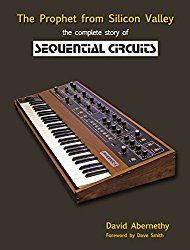
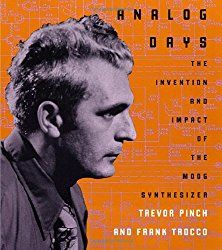
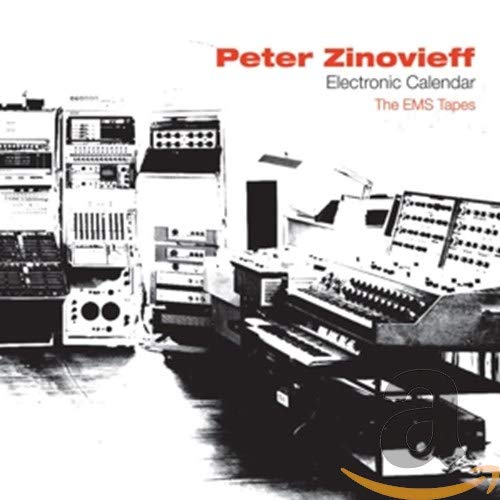
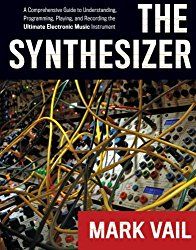
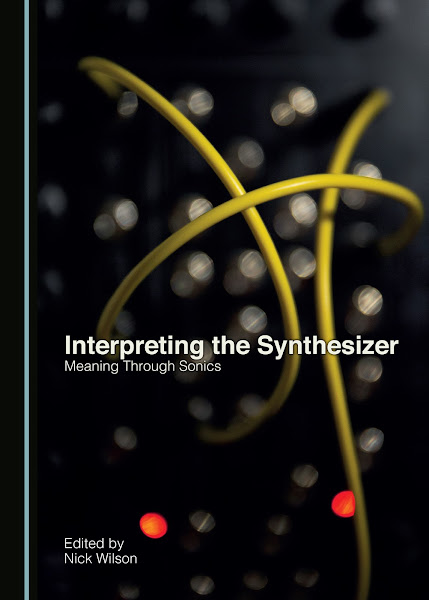
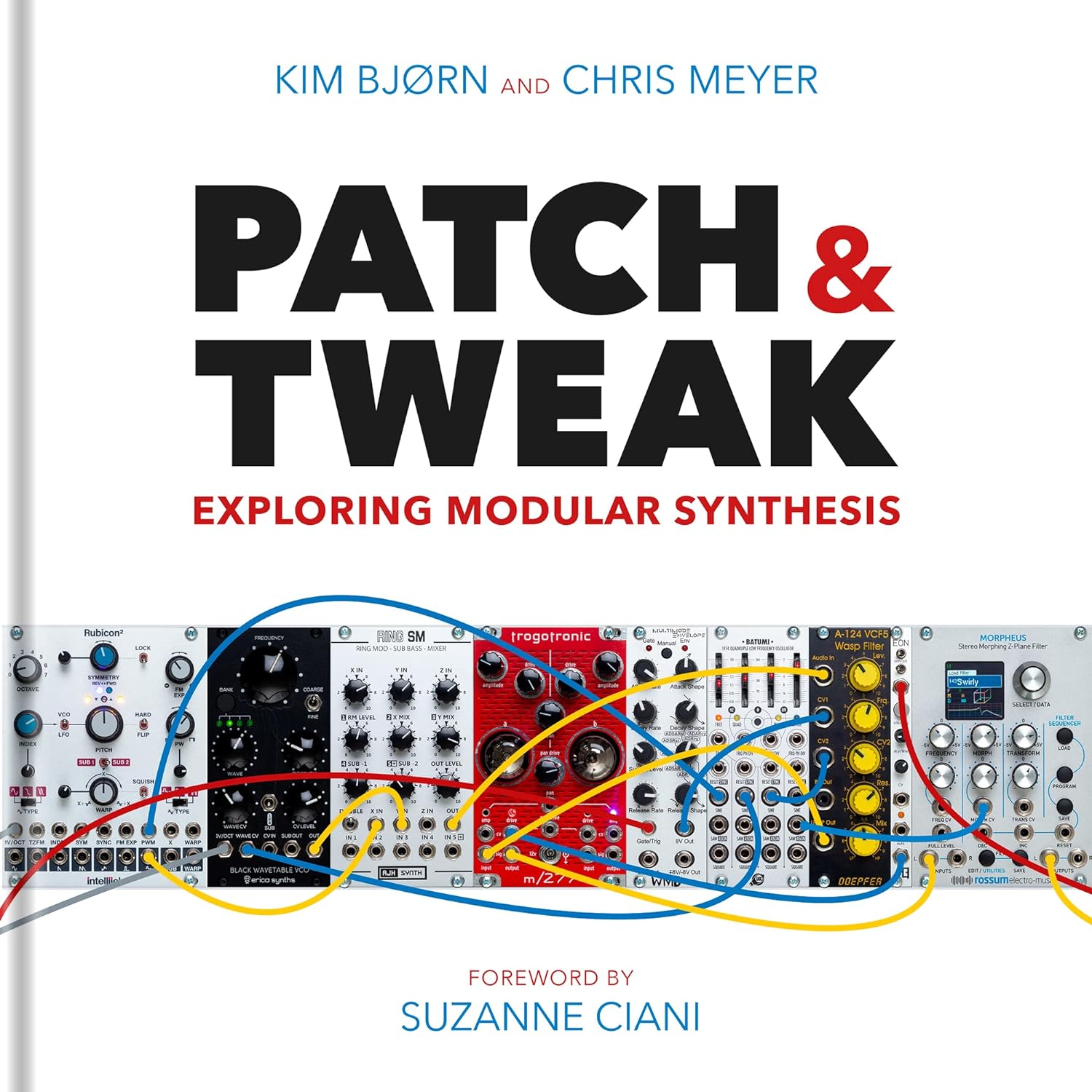
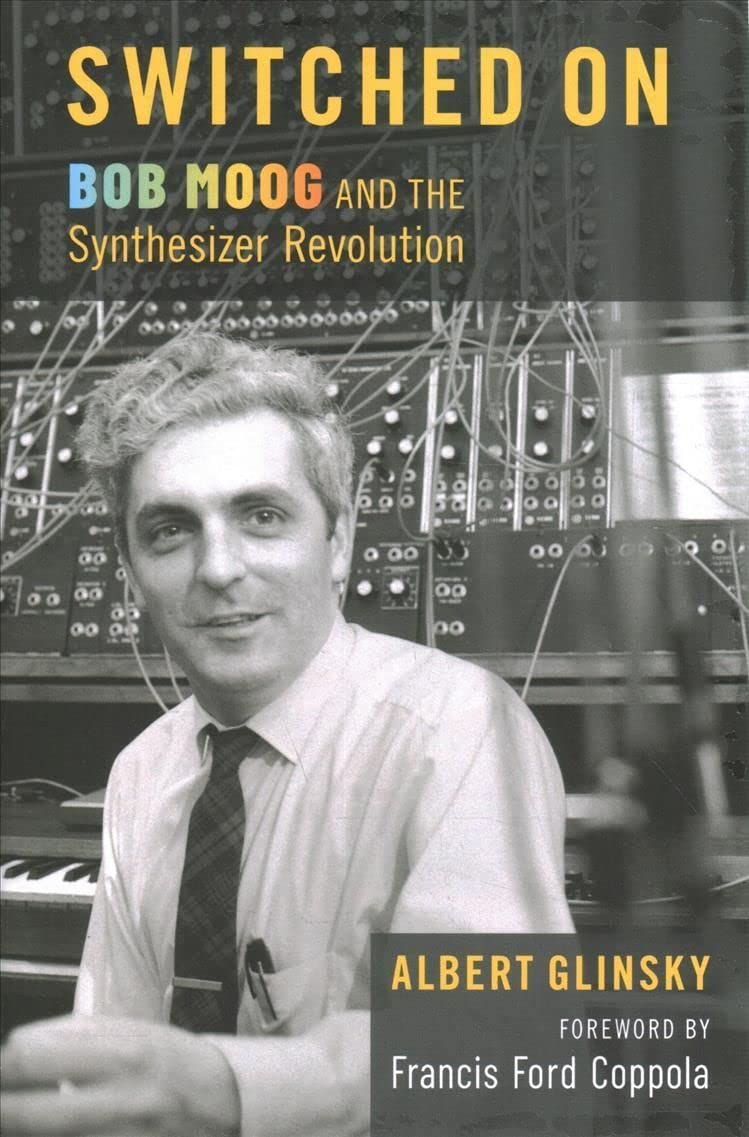
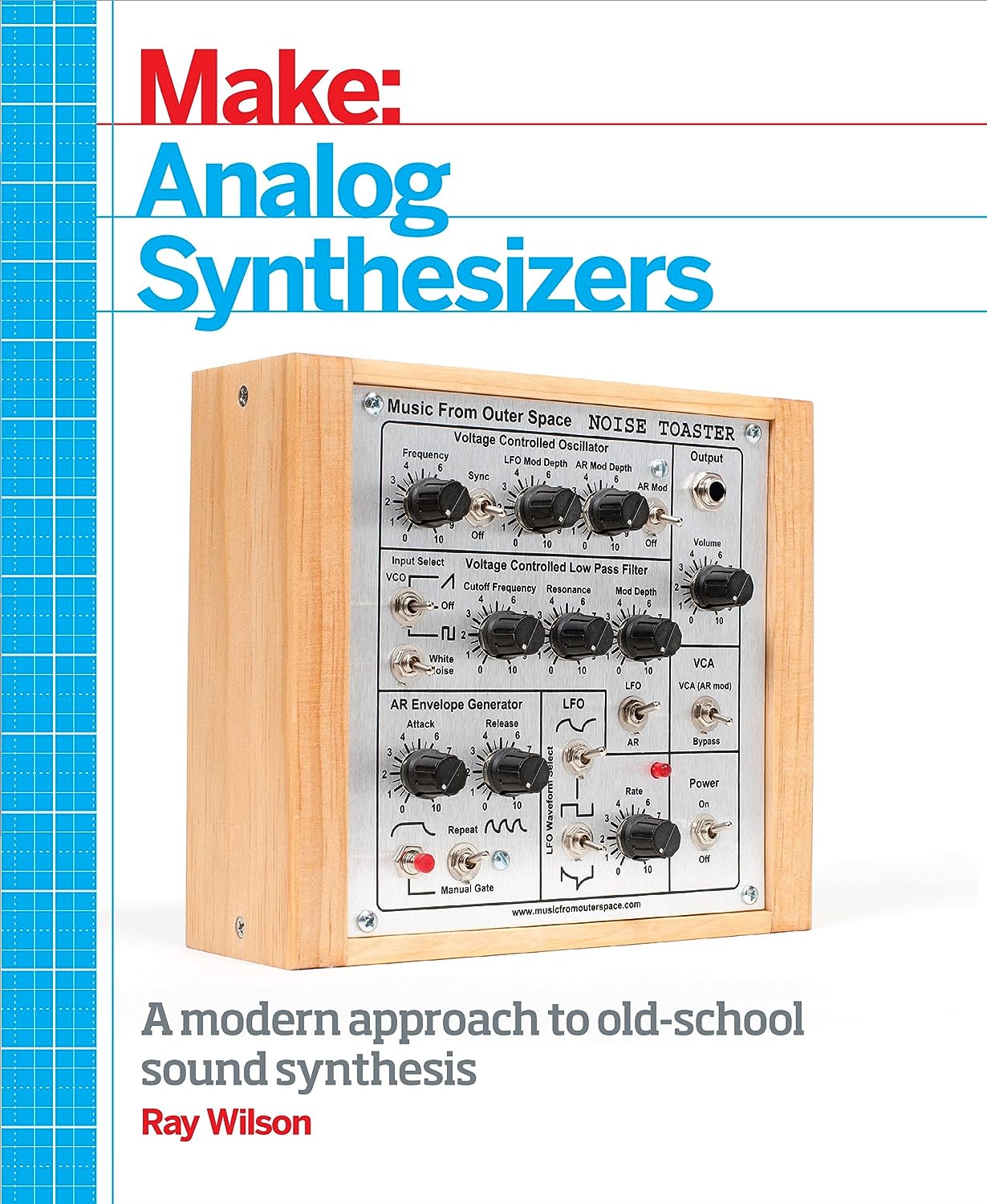
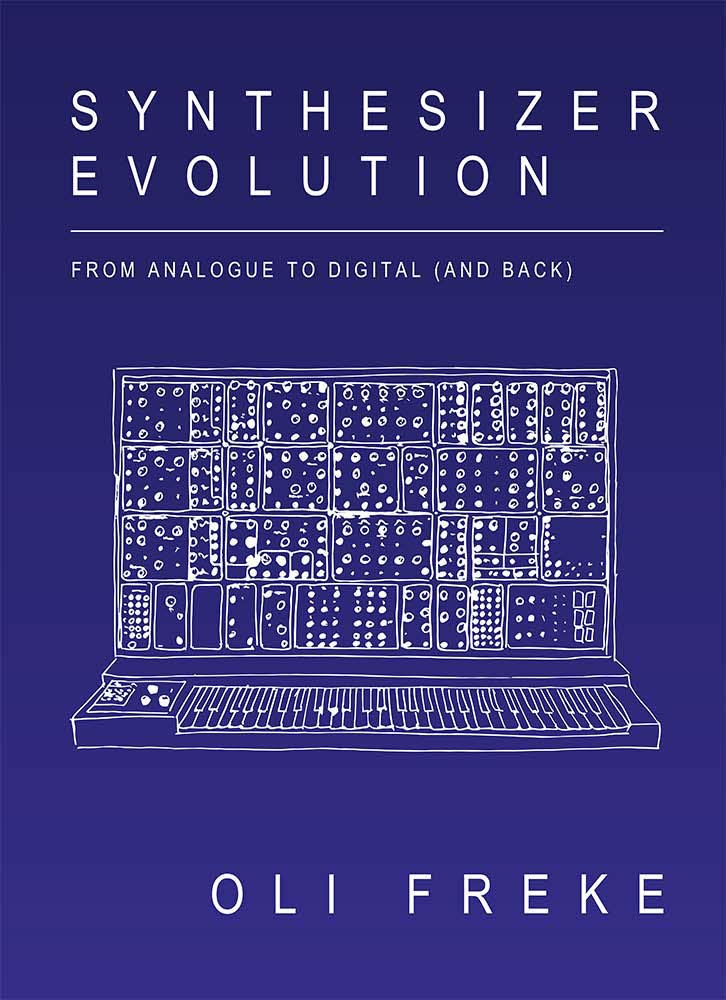
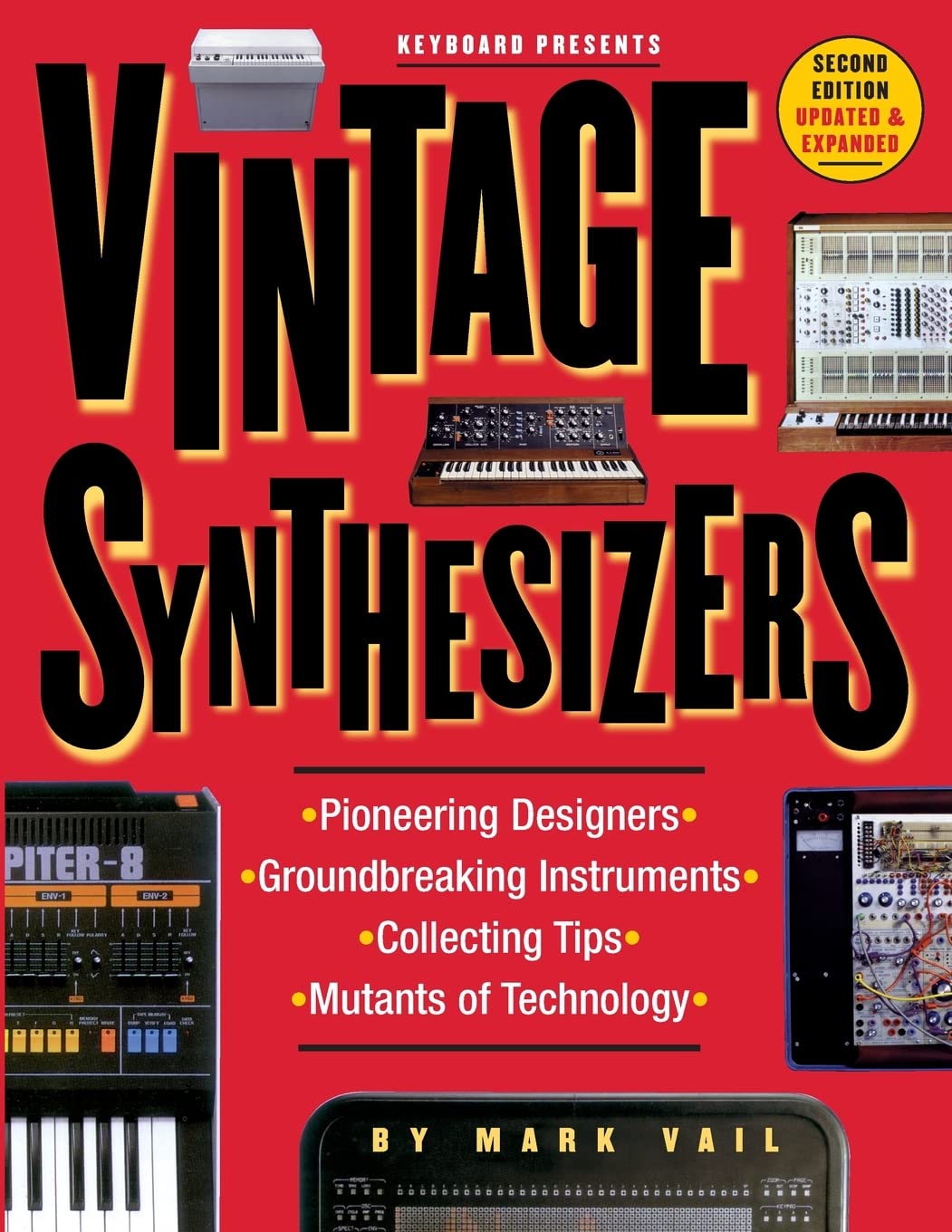
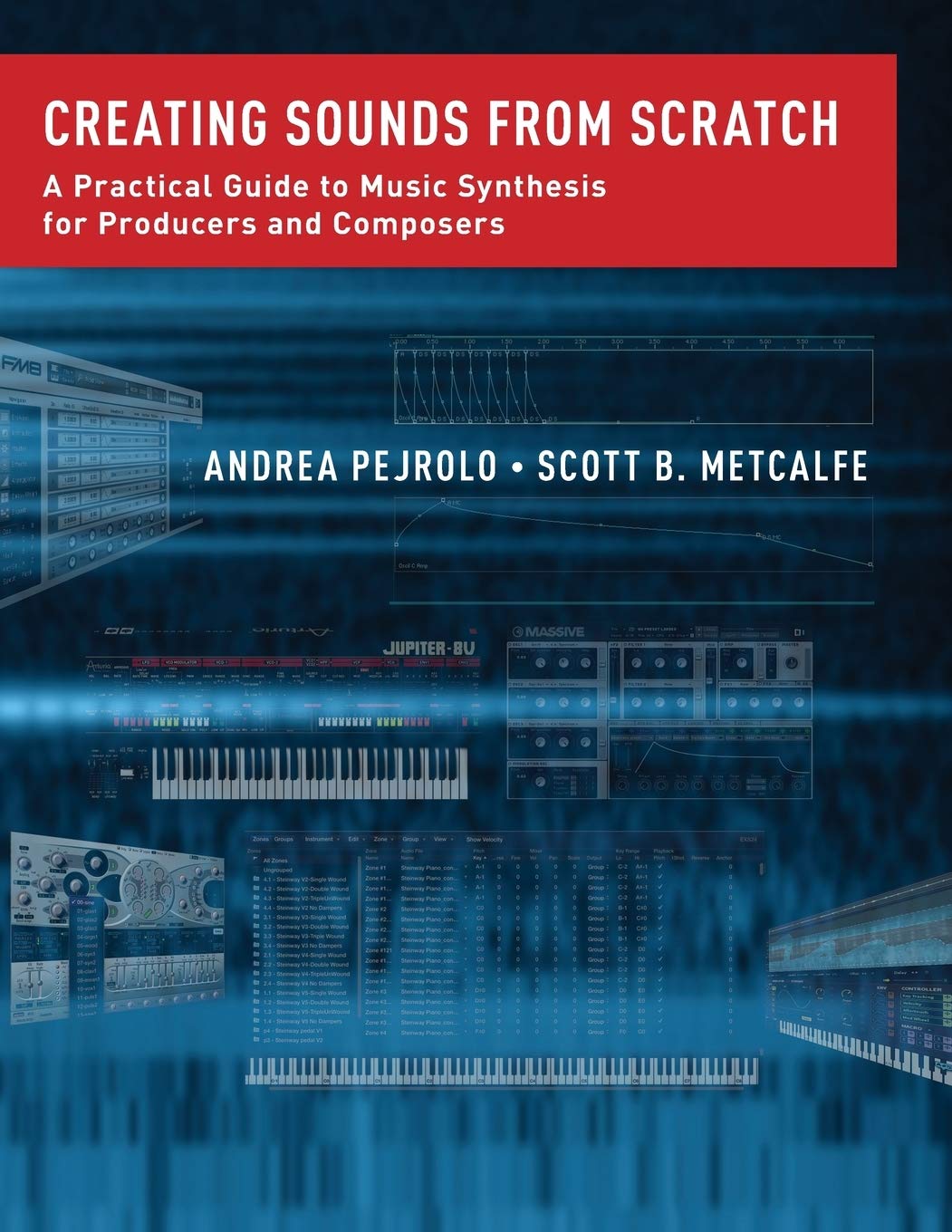
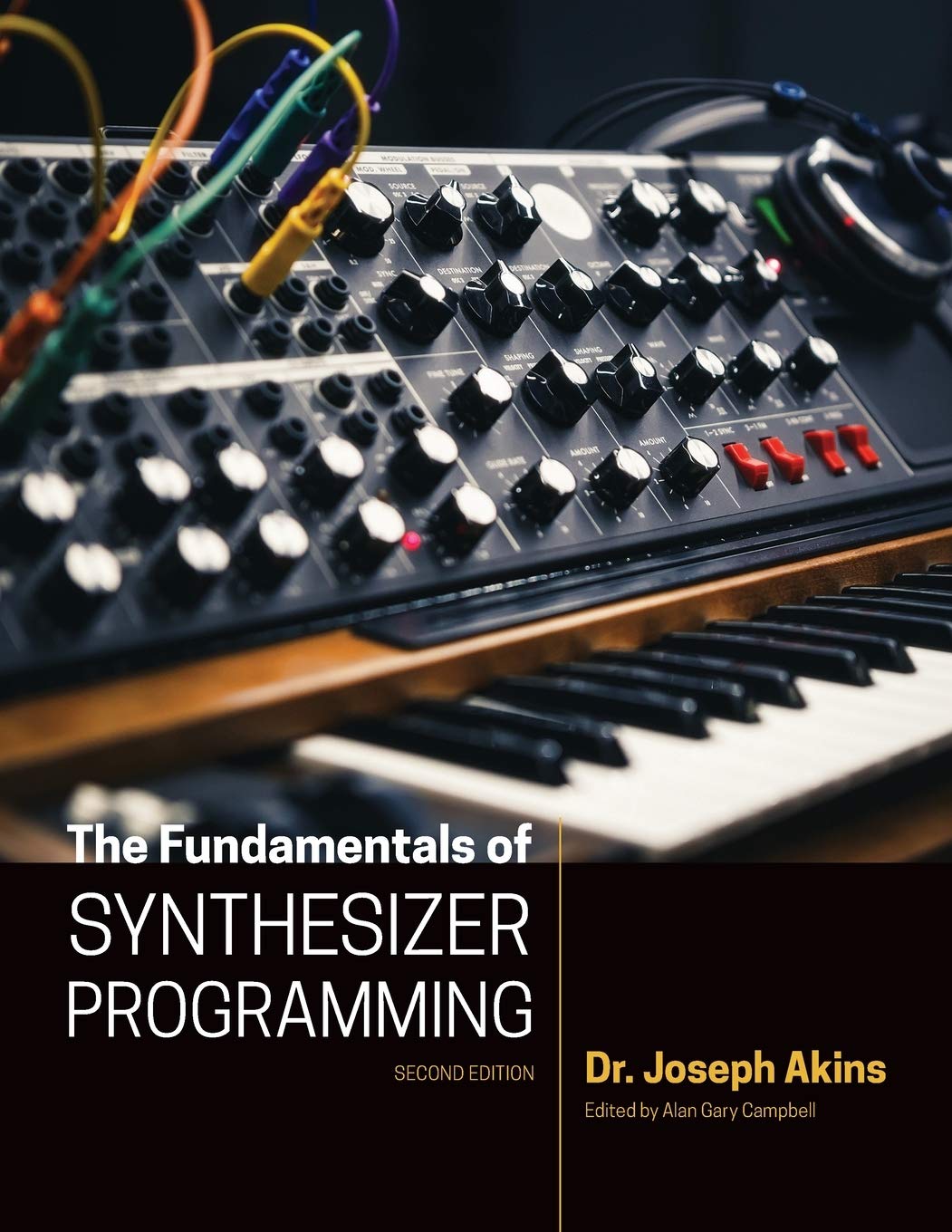

© Matrixsynth - All posts are presented here for informative, historical and educative purposes as applicable within fair use.
MATRIXSYNTH is supported by affiliate links that use cookies to track clickthroughs and sales. See the privacy policy for details.
MATRIXSYNTH - EVERYTHING SYNTH













© Matrixsynth - All posts are presented here for informative, historical and educative purposes as applicable within fair use.
MATRIXSYNTH is supported by affiliate links that use cookies to track clickthroughs and sales. See the privacy policy for details.
MATRIXSYNTH - EVERYTHING SYNTH





























